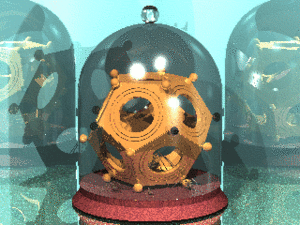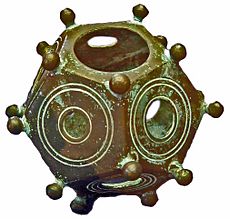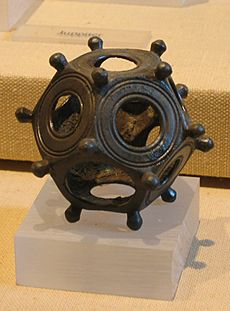Roman dodecahedron facts for kids
Roman dodecahedron is the name for dodecahedra which were found in Europe. In total, over hundred such objects were found in all European parts of the Roman Empire. They date from the second or third century CE, and were made of bronze or stone. They are hollow, and each of the twelve pentangular faces has a hole in it. Most of these were found on the territories of modern-day France and Germany, but some were also found in Hungary and Great Britain. They are between 4 centimetres (1.6 in) and 11 centimetres (4.3 in) in size.
The function or use of the dodecahedra remains a mystery; no mention of them has been found in texts or pictures of the time. Speculated uses include candlestick holders (wax was found inside one example); dice; survey instruments; devices for determining the optimal sowing date for winter grain; that they were used to calibrate water pipes; and army standard bases. It has also been suggested that they may have been religious artifacts of some kind. This speculation is based on the fact that most of the examples have been found in Gallo-Roman sites.
Images for kids
-
Dodecahedron, 1st–4th century, bronze, Hunt Museum, Limerick, Ireland
See also
 In Spanish: Dodecaedro romano para niños
In Spanish: Dodecaedro romano para niños







